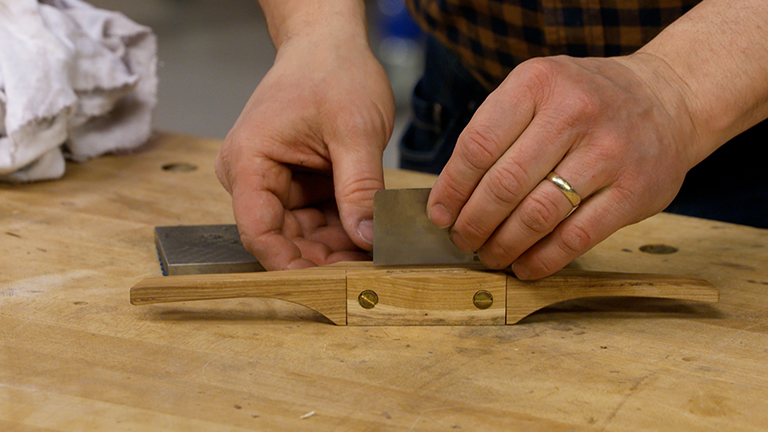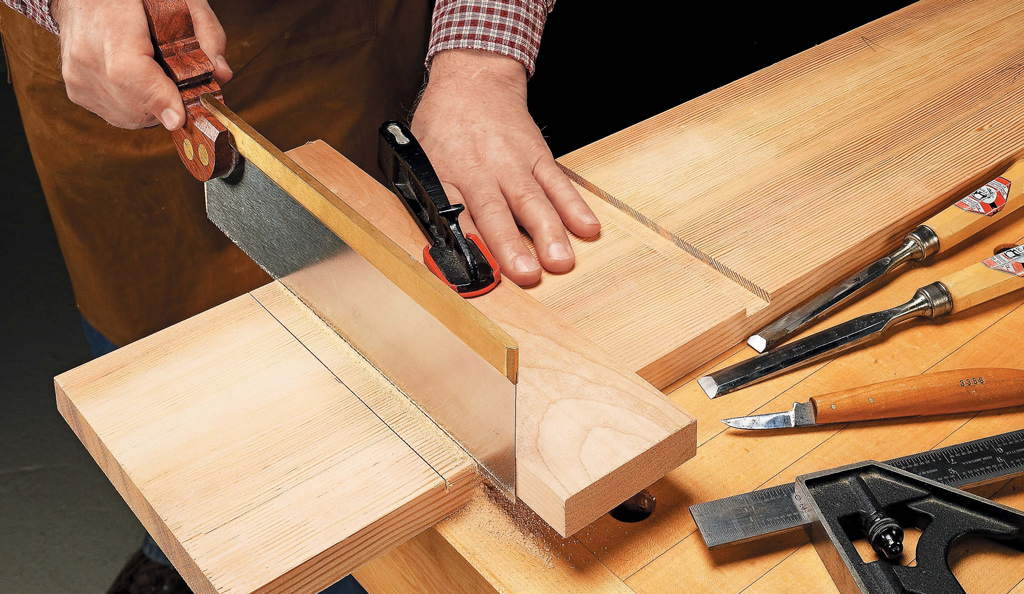If your experience with a block plane is limited, you can improve your skills with a little practice. Just start with a very sharp blade that’s set to take a very thin shaving. Then work on a scrap piece until you’re comfortable with the tool. In most cases it’s best to hold the plane at an angle to the workpiece, which is firmly clamped to a workbench. Skewing the plane like this effectively lowers the angle of the blade and you’ll get a cleaner cut. The goal is to remove thin shavings until you’ve achieved the result you’re looking for. Once you have the basics down, you can put your block plane to work on a project. One way is to use it for trimming. A block plane can make quick work of trimming joinery. I like to cut dovetails or box joint fingers a little long so I can trim them perfectly flush after assembly. When doing this, it’s important to work from the edge of the workpiece back. This prevents the part being trimmed from chipping. Just make light passes across the ends of the fingers until the joints are flush.

There are several ways to trim hardwood edging on plywood, but a block plane can be one of the quickest. As you trim, just skew the plane toward the edge of the panel. This way, you’ll minimize the risk of gouging the face of the plywood. Then just make several passes along the edging until it’s flush with the plywood.

A block plane makes a handy shaping tool as well. I like to use my block plane to create chamfers of all sizes. Even wide chamfers are simple to shape with the block plane. For chamfers less than 1/8", all you need to do is make a few passes by eye. But if the chamfer is wider, I find it best to draw layout lines on the workpiece as a guide. This way, all you need to do is keep the plane centered and make several straight passes until you reach the lines.

Even a roundover is fair game for a block plane. Here the technique is a little different. First, draw the profile on the end of the workpiece along with layout lines on the edge and face. Next, to get the desired profile, vary the angle of the plane as you make each pass. Removing the waste at the center of the profile may take several passes, while the edges may only need one pass to create a smooth profile.

Cleaning up an edge with a block plane is faster and more efficient than sanding. You can remove saw marks, burn marks, and mill marks with just a few passes. Here again, keep the plane slightly skewed for a cleaner cut. And be careful to maintain a flat, square surface. Then make a few passes along the edge until all the marks are gone.












